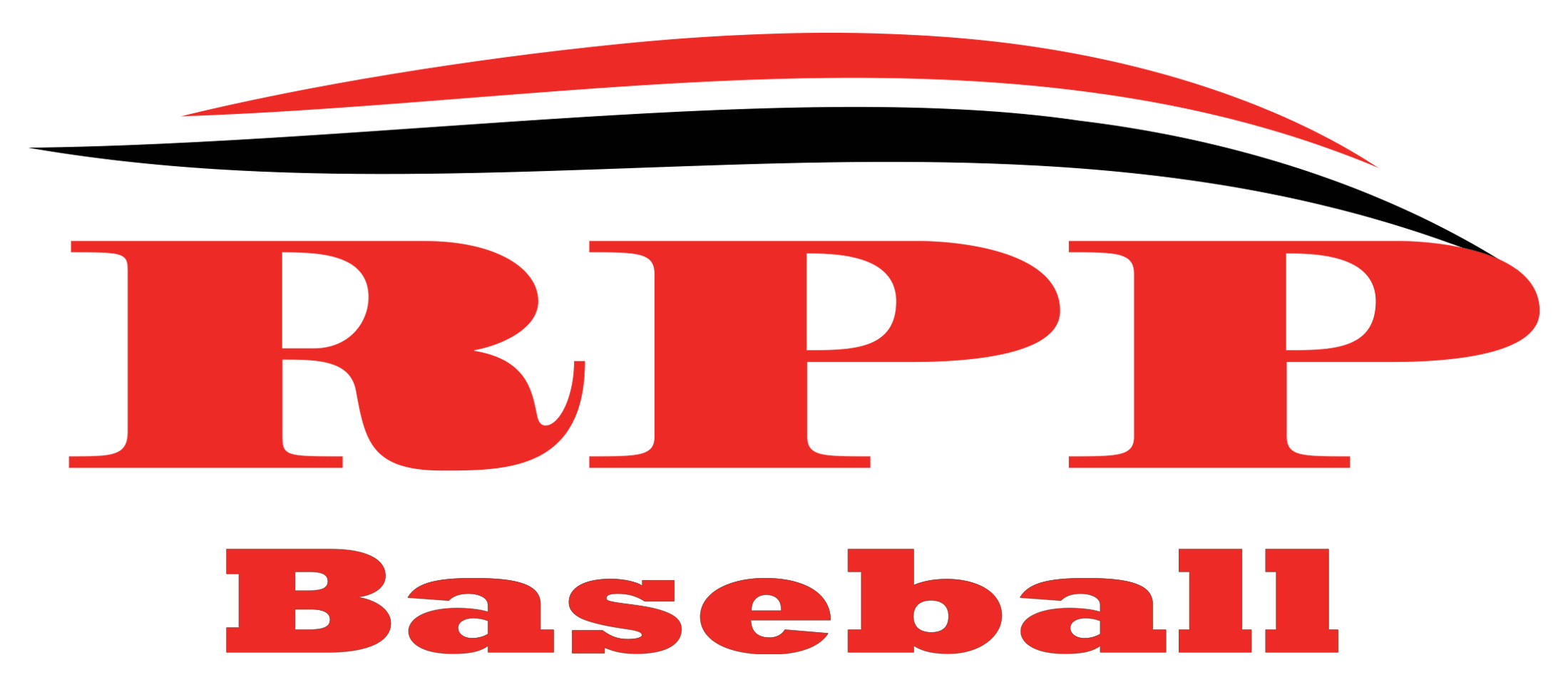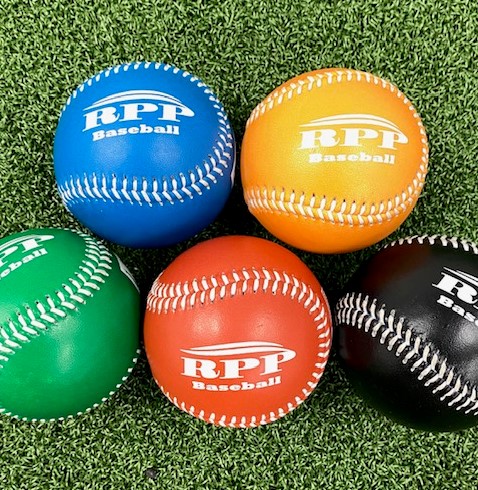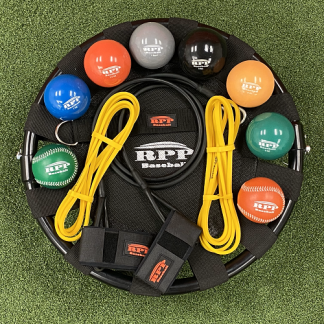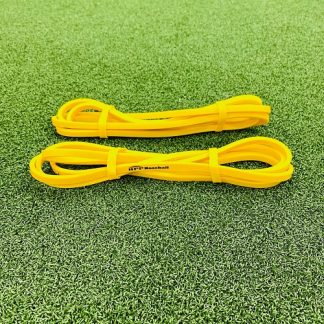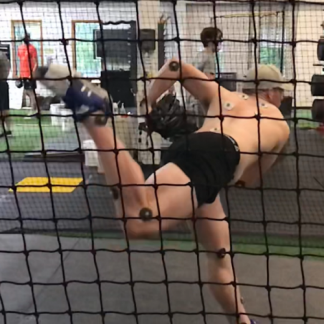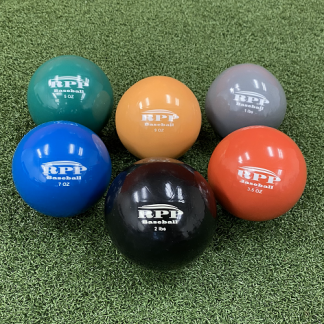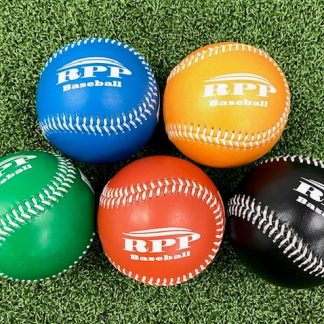Description
Weighted baseballs are an effective means of enhancing velocity.
- Real leather weighted balls – 4 oz, 6 oz, 7 oz, 9 oz and 11 oz
- Color coded for easy identification
- Velocity enhancement
- Training with varied stimuli helps develop neuromuscular pathways
- Improves kinesthetic awareness
Weighted Balls – Frequently Asked Questions
Weighted balls are just one of the tools used in our throwing programs to help athletes achieve a higher velocity ceiling. As with any protocol, the “dosage” (volume and intensity) is paramount in order to maximize their effectiveness safely. Below are a few questions we have received in the past including how they work, and how we integrate them into a total throwing program used to increase velocity on the mound.
Do you use weighted baseballs in your throwing programs?
Yes, but it depends on a few variables:
-
- Must be at least 16 years or older
- No current pain
- The movement quality of the athlete (assessment)
- Anatomical maturity of the athlete (growth plates)
- A good foundation of strength
- Display good fundamental mechanics of throwing a regular (5 oz.) baseball
Note: If you have (i) severe physical constraints, (ii) disconnected movement patterns, or (iii) are currently experiencing pain, we would not recommend you go anywhere near a weighted ball program before completing a thorough strength and conditioning program for at least 8 weeks
Can’t strength training alone improve velocity? Why weighted balls?
Yes, in fact I’ve witnessed it many times during the off season. However, throwing weighted balls will help improve coordination of muscle contraction and the development of a more efficient kinetic chain in the throwing motion helping the athlete stay connected. This, combined with increasing physical size and strength through weight training, is the best of both worlds creating a much greater result.
Is throwing a weighted baseball dangerous?
Doing anything overhead at a high velocity increases the chance of injury. Weighted balls are no different. What’s even more dangerous is a velocity program that is not “all inclusive”. By that we mean a program that doesn’t contain ALL (not some) of the following components:
-
- Proper and thorough assessment
- 2-4 week “on-Ramp” (in which mechanical disconnects are addressed)
- Full, 20-30 minutes warm-up (soft tissue / mobility / activation)
- Carefully programmed and individualized throwing days
- Strength training (yes, weight lifting)
- Post throwing recovery
What’s the difference between Overload and Underload Weighted Balls?
Throwing overload and underload weighted balls helps remap mechanics and recruit the pitcher’s natural ability to throw harder but they each serve different purposes.
Overload training provides the pitchers with the training effect of increasing resistance and external rotation if necessary while slowing down the deceleration pattern. Increasing the weight of the implement slows down the arm action and moves the athlete further to the right on the speed-strength continuum. In other words, overload weighted balls comprise a medium between traditional throwing drills and medicine balls/resistance training.
Underload training provides the pitcher with the training effect of improving arm speed on the rapid fire end of the spectrum. The pitcher gets the stimulus of throwing a 3 or 4 oz. baseball much faster than he would throwing a regulation 5 oz. baseball. Decreasing the weight of the implement speeds up the arm action and moves the athlete further to the left on the speed-strength continuum. This creates not only preparation and awareness of how the arm moves in a higher velocity throw, but also improves the capacity in both the underlying musculature as well as the central nervous system.
Here are a few more misunderstood facts about throwing a weighted ball…
As you increase the weight of the ball, you slow down the arm action. The more a ball weighs, the less you can accelerate it, and less acceleration means less force on the ligaments and tendons. In other words, there is actually less force on the ligaments and tendons with a heavier ball.
We do not however, go above 9 oz. for any drill that has a considerable lay-back component done at high velocity. The stress on the elbow is already pretty high from being in such a provocative position, so no need to add weight to dysfunction.
Weighted baseballs are basically strength training for the arm. They sit right in between traditional throwing (bullpens, long toss, and flat ground) and the medicine ball we do during the off season.
How do you incorporate them into your throwing programs?
There is about a 3-4 week ramp up of long-tossing / flat-ground connection (mechanics) drill work to re-map any mechanical “disconnects”. Once the on-ramp phase is completed, we begin incorporating the weighted balls into the program using a “periodiz-ed” (progressive) approach.
How do you decide how heavy to go?
We keep most of our weighted baseball drills in the 7-9 oz. range. The dosage is tailored to the individual depending on various factors such as anatomical maturity, strength, training age, etc. With the exception of a couple of drills, we don’t exceed 9 oz.
What time periods do you recommend to do a weighted ball program?
-
- Summer and early Fall (May – October)
- 4-week winter tune up (college and pros only)
Can’t you accomplish the same thing with weighted ball “holds”?
The most obvious disconnect with holds as opposed to actually throwing a weighted ball is that the pitcher performing holds does not achieve adequate external rotation of the arm, which is the whip-like lay back of the arm that helps to generate velocity. If the brain realizes it has a weighted ball in its hand and that the arm will need to decelerate at release with the ball still in its hand, the body will want to protect itself by not allowing as much acceleration, and not allow the arm to become whip-like by laying back into external rotation.
For those of you familiar with the towel drills, this is a similar problem to the mechanics resulting from that drill. Basically, weighted ball holds change the ER and decel of the throw because neurologically the brain knows the body is decelerating with a weighted implement still in its hand. The other issue is a towel is virtually “weightless”. I’ve seen more arm problems from over torqueing the arm with a towel than with a weighted ball. It’s not much different than throwing a wiffle ball.
Will weighted balls affect command or the ability to repeat the delivery consistently?
Many pitching coaches talk about finding a “repeatable delivery”. It doesn’t exist! Every pitch is unique and will present subtle changes requiring subconscious, real time adjustments to achieve the desired goal.
Training with varied stimuli, like a weighted balls, allows for the development and preparation of the neuromuscular pathways in a varied format to account for nearly every possible situation.
If you’d like to be placed on our email list please enter your email address below!
